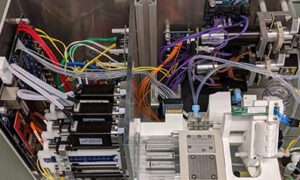Over the past 12 months, our team at Toolza conducted more than 200 interviews with founders and finance teams. Half of those conversations were with Gen Z entrepreneurs – founders in their twenties, often running lean teams, operating globally, and earning revenue well before mastering financial operations.
These conversations helped us understand why so many fintech products remain out of sync with the next generation of operators. What follows is a synthesis of patterns we observed: how these founders think, how they work, and what they need – and don’t need – from financial tools.
The Gen Z Founder: A Different Baseline
The new generation of CEOs isn’t coming from Wall Street offices but TikTok. Many Gen Z founders started earning money before they understood what bookkeeping is. They didn’t learn finance in school or in a corporate training session. They learned by doing it, and often by necessity.
They’re not waiting to “grow into” enterprise tools. They need something that works from day one, without a CFO, and without training materials.
Most use stablecoins alongside traditional currencies. They onboard freelancers from multiple countries. They manage both crypto wallets and bank accounts. In short: they are digital-first and structurally global.
They also expect their tools to match the rest of their digital environment. A product that feels clunky or time-consuming is abandoned quickly. A dashboard that requires reading documentation won’t be read. What they want is frictionless utility.
Why Legacy Fintech Fails Them
The tools built for corporate finance departments fall short on three fronts:
- Unnecessary complexity. Tools designed for teams of 100 don’t scale down to teams of 15. Access roles, procurement workflows, and month-end processes aren’t relevant.
- Compliance-first mindset. These users aren’t ignoring compliance – they’re expecting it to be handled for them. They want transparency in spending and cash flow, but without needing to define what “internal controls” mean.
- Broken onboarding. A common pattern we heard: products that require multi-step setups or learning curves are simply dropped. If a product doesn’t provide value within minutes, users move on.
Gen Z founders do not expect less functionality, but they expect it to work differently – to feel intuitive, to have quick performance and emotional resonance.
The Products They Choose Instead
In interviews with Gen Z founders, we observed a clear alignment between product adoption and how the product feels in use. Founders consistently favored tools that offered:
- Self-serve onboarding with minimal barriers to entry
- Interfaces that prioritize clarity and reduce cognitive load
- Immediate access to relevant financial data and insights
- Unified visibility across multiple currencies and platforms
Notably, product design mattered as much as product performance. Apps like Notion, Linear, and Mercury were frequently referenced were mentioned not because of their features alone, but because of how intuitively those features were structured. Founders described them as “obvious,” “lightweight,” or “quietly smart” – terms that reflected emotional response as much as practicality.
This preference wasn’t limited to aesthetics. It reflected a broader expectation: products should shape themselves around the user’s pace and decision style, not the other way around.
Hybrid Finance Is Not an Add-On
If there is one clear operational need that came up in nearly every call, it’s this: unify fiat and crypto.
Digital-native teams no longer separate “Web2” from “Web3”, since they operate across both. For them, tracking USDC payouts to contractors in Serbia and SWIFT transfers to suppliers in the U.S. shouldn’t require two systems or any manual work at all. They expect to see these flows together, in one system, with no need to toggle between wallets, banks, or spreadsheets.
Yet most financial tools either ignore crypto altogether, or treat it as an experimental asset. And such approach is outdated.
Gen Z generation doesn’t treat stablecoins as speculative. They treat them as infrastructure. USDC is a business account. Solana is a network. A wallet is just another ledger.
The expectation here is straightforward: all financial flows, regardless of form, should be accessible, trackable, and reconcilable in one coherent view.
From Finance as Expertise to Finance as Infrastructure
Another consistent signal in our conversations was this: Gen Z founders don’t aspire to become part-time CFOs. They don’t want to “learn” finance in the traditional sense, they want systems that make it legible and manageable, without requiring formal training.
This isn’t about being careless. It’s about expecting tools to carry the operational load, to interpret, automate, and surface what matters without needing constant input.
Real-time visibility is no longer seen as a premium feature. It’s expected. Support is not something to submit a ticket for – it should appear where and when it’s needed. And if a system requires explanation, it hasn’t been designed fully.
This expectation reflects a broader shift in how modern companies operate. Teams are leaner, operations are more distributed, and complexity is the norm. In that environment, tools that don’t adapt to their users will get left behind.
Conclusion
The financial software industry has been slow to evolve. It is held back by assumptions that scale requires complexity, and that usability must be traded for control.
Gen Z founders are demonstrating the opposite. They’re scaling without finance departments. They’re hiring globally without compliance teams. They’re doing it all with tools that speak their language: fast, clear, and designed to get out of the way. And understanding this helps create finance products that truly meet their needs.



































